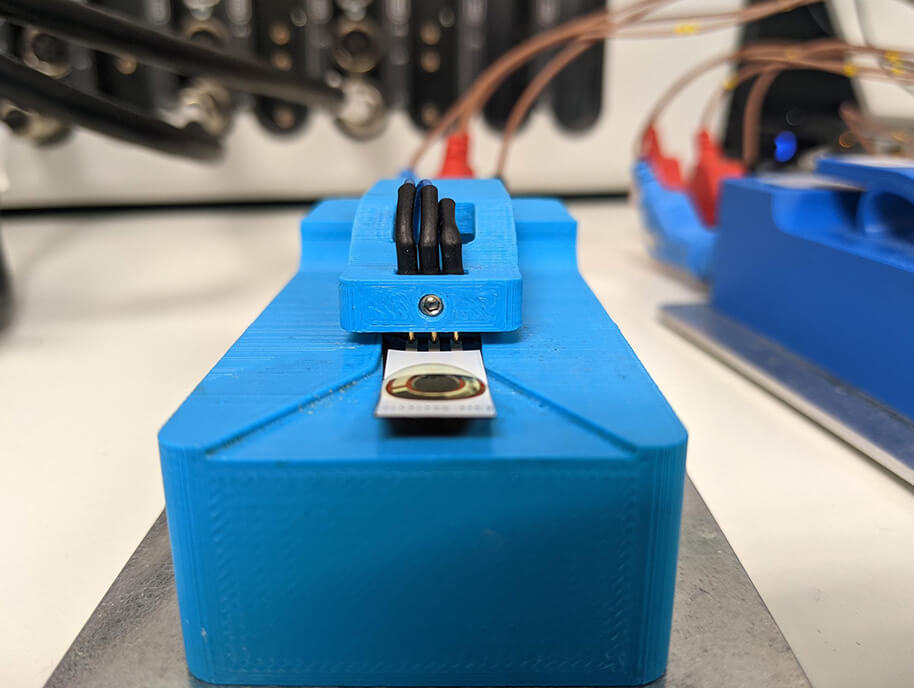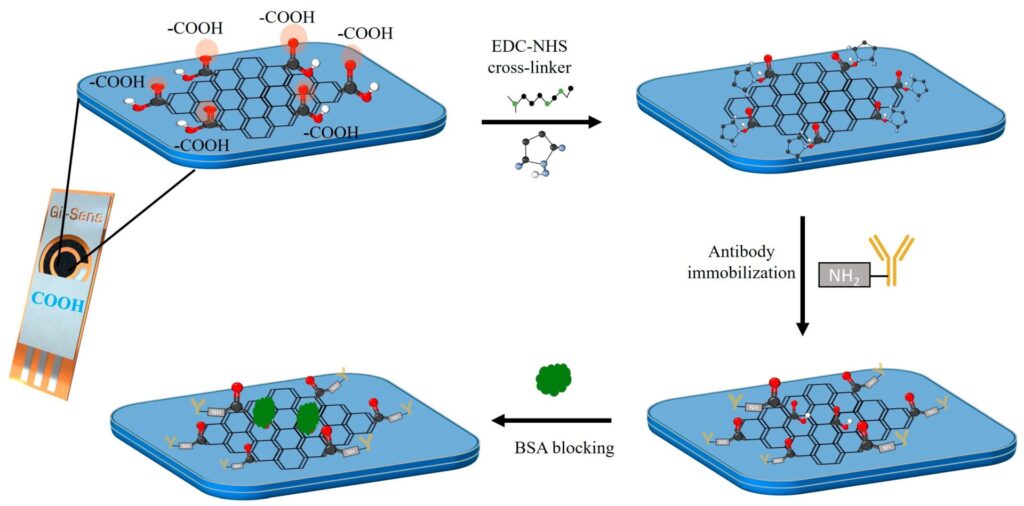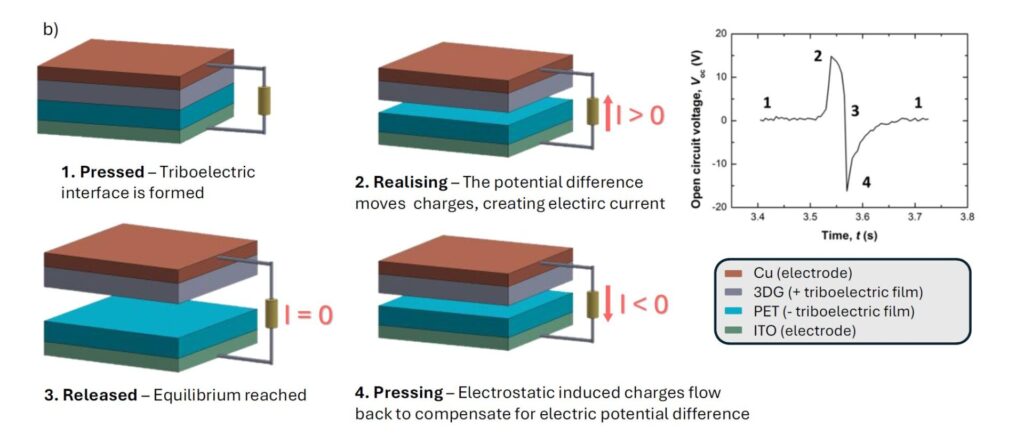
Polymer indicator displacement assay (PIDA) with boronic acid receptors on Gii-Sens for self-optimised impedimetric lactic acid determination
Highlights
- Gii-Sens can help to move benchtop devices to point of care as required in the application of such assays given it’s low cost and reliable
- Abnormal blood lactate concentrations resulting from conditions such as sepsis can be difficult to identify and diagnose in critically ill patients. Therefore, reliable real-time lactate detection through single-point or continuous sensing could be advantageous to outcomes in ICU care or during intensive surgery, and early detection could reduce acidosis mortality rates among critically ill patients. To realise this, low cost, reliable sensing methods capable of accurately detecting lactate in serum or blood without interference from other species present are required.
- Multiple experiments were performed with the same modified electrode with only minimal loss of sensing performance indicating the robustness of our product.
- The experiment successfully shows that we can successfully perform a polymer indicator displacement assay using our Gii-Sens platform.
Abstract
Synthetic organic receptor molecules are employed based on boronic acids attached to graphene to provide functionality and selectivity in competitive analyte binding. Here, a new electrochemical sensor concept based on a surface redox polymer indicator displacement (avoiding traditional solution redox indicators) is proposed and demonstrated on graphene foam electrodes. A pyrene-derivatised boronic acid chemo-receptor for lactic acid is adsorbed onto graphene foam and coated with poly-nordihydroguaiaretic acid (poly-NHG) as an electrochemically active polymer indicator. When bound to the boronic acid, poly-NHG remains redox silent. Dynamic displacement with lactic acid results in a concentration-dependent Faradaic current response. Effects of pH and detection methodology (voltammetry, chronoamperometry, and impedance spectroscopy) are investigated. Self-optimised impedimetric sensing based on the interfacial electron transfer resistance is demonstrated. While lactic acid sensing in human serum is possible, the sensor response is lower. Surface-active components from human serum are shown to modify the sensor response without affecting performance. Lactic acid sensing in artificial sweat at pH 4.7 is shown to result in a Langmuirian binding curve with apparent binding constant K = 40 M-1.
Introduction
The concept of a surface-bound redox polymer as indicator in electroanalysis emerged recently [1] in the context of the development of a glucose/fructose sensor. Traditionally, in impedimetric sensors a solution phase redox system such as the Fe(CN)63-/4- would be employed as a redox probe/mediator [2] to detect subtle changes in the rate of electron transfer associated with analyte binding at the sensor surface [3], especially in label-free immunosensors. The Fe(CN)63-/4- redox probe has been successful particularly due to the rate of electron transfer at the electrode=solution interface (i.e., the charge transfer resistance) being sensitive and readily quantified by voltammetry or by impedance spectroscopy tools [4]. However, practically adding a solution redox probe is less desirable as it requires solution preparation. In contrast, surface immobilised redox systems can be precoated onto disposable sensor strips. It is shown here that poly-nordihydroguaiaretic acid (poly-NHG) can be employed as immobilised redox indicator “interphase” for lactate sensing (based on the charge transfer resistance) when precoated together with boronic acid chemo-receptors onto graphene foam electrodes. A “soft matter” layer as the interphase at the electrode surface can be employed with a redox response sensitive to lactate binding equilibria.


